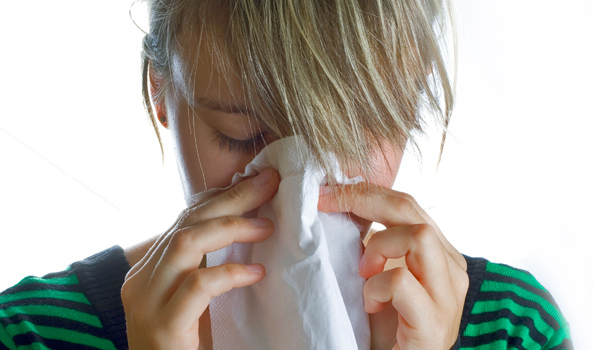Stand Back: Flu Virus Travels 6 Feet

If you know someone who is suffering from the flu, you might want to keep your distance. Infectious flu-containing particles exhaled by a sick person can travel at least 6 feet, according to a new study.
The study involved 94 people who visited the hospital for flu-like symptoms during the 2010 to 2011 flu season. While the patient lay in bed, the researchers sampled the air in the room using devices that were placed 1, 3 and 6 feet away from each patient.
The results showed that potentially infectious flu virus particles were found at each of the sample locations, the researchers said.
Health care providers "could be exposed to infectious doses of influenza virus at a distance of up to 1.829 meters (6 feet) from patients," the researchers wrote in the Jan. 31 issue of the Journal of Infectious Diseases.
Researchers know that flu spreads through the air, especially when people cough or sneeze. But more specific details about flu transmission, such as the amount of virus a sick person produces and spreads into the air around him, was not clear, said study researcher Dr. Werner Bischoff, of Wake Forest School of Medicine in North Carolina. [See How to Avoid Spreading the Flu.]
It was previously thought that the flu spreads mainly through large particles, or droplets, in the air that travel short distances, from 3 to 6 feet. But the new study showed most flu viruses are found in very small particles in the air, Bischoff said. Smaller particles can travel farther than larger ones, he said. Because the study did not look at distances beyond 6 feet, the researchers cannot say whether the flu virus can travel farther. (Previous studies have found that passengers on a plane who sit within two rows of a person with the flu are at increased risk of catching the disease.)
When treating flu patients, health care providers are advised to wear masks during routine procedures, and to wear respirators when they perform procedures that might cause the patient to cough. (These procedures were not included in this study.)
Get the world’s most fascinating discoveries delivered straight to your inbox.
The new findings suggest that masks might not be enough to protect health care providers, because the small virus particles might still be inhaled, Bischoff said.
"Our study offers new evidence of the natural emission of influenza and may provide a better understanding of how to best protect health care providers during routine care activities," Bischoff said.
However, because the researchers did not examine whether or not any health care providers fell ill, more studies that look at flu transmission are needed, Bischoff said.
The study also found that some people are more contagious than others. Nineteen percent of patients with the flu were "super-emitters," emitting up to 32 times more virus particles than their fellow flu sufferers, the researchers said. More research is needed to discover factors that would allow physicians to identify super-emitters, and thus help curb disease spread, Bischoff said.
The best way to avoid catching the flu, regardless of whether or not you work in health care, is to get a flu shot.
Pass it on: Flu virus particles can travel at least 6 feet.
This story was provided by MyHealthNewsDaily, a sister site to LiveScience. Follow Rachael Rettner on Twitter @RachaelRettner, or MyHealthNewsDaily @MyHealth_MHND. We're also on Facebook & Google+.

Rachael is a Live Science contributor, and was a former channel editor and senior writer for Live Science between 2010 and 2022. She has a master's degree in journalism from New York University's Science, Health and Environmental Reporting Program. She also holds a B.S. in molecular biology and an M.S. in biology from the University of California, San Diego. Her work has appeared in Scienceline, The Washington Post and Scientific American.


